Today Current Affairs: 20th January 2022 for UPSC IAS exams, State PSC exams, SSC CGL, State SSC, RRB, Railways, Banking Exam & IBPS, etc
Table of Contents
Pandit Birju Maharaj:

The famous Kathak dancer Birju Maharaj, who took the traditional Indian dance form ‘Kathak’ to the world stage passed away.
- He was one of India’s most famous and favorite artists, belonged to the Kalka-Bindadin gharana of Lucknow, a classical Kathak dance form. He was born on February 4, 1938 in Lucknow.
- Awards: Padma Vibhushan in 1983, Sangeet Natak Akademi Award and Kalidas Samman.
- Kathak is the only form of classical dance wedded to Hindustani or the North Indian music. Both of them have had a parallel growth, each feeding and sustaining the other. (Odissi dance uses Odissi music which is blend of Hindustani and Carnatic).
- Kathak is one of the main genres of ancient Indian classical dance and is traditionally regarded to have originated from the travelling bards of North India referred as Kathakars or storytellers.
PM GatiShakti:

Large-scale absence of coordination and collaboration among agencies has been a major challenge to time bound infrastructure project implementation in India.
- Very often these projects have faced time overruns, leading to significant cost escalations.
- As per the Ministry of Statistics and Programme Implementation (MoSPI), Government of India, in the beginning of 2021, 1,687 Union Government projects under implementation, valued more than Rs 21.45 lakh crore, had run into cost overrun of nearly 20 percent, largely because of their delays.
- The reason for delays include underestimation of original project cost, spiralling land acquisition cost, delays in environment, forest and wildlife clearances and industrial licensing permission, road crossing of pipelines/transmission lines, shifting of utilities, delays in the tie-up of project financing, delays in finalisation of detailed engineering, etc.
- In addition, there are bottlenecks at the State Government level such as issues in land acquisition and removal of encroachments, relief and rehabilitation planning and implementation, timely issuance of no objection certificate, necessary power and water supply, and work order related issues.
PM GatiShakti:
- Launched in 2020, it is a digital platform that connects 16 ministries — including Roads and Highways, Railways, Shipping, Petroleum and Gas, Power, Telecom, Shipping, and Aviation.
- It aims to ensure holistic planning and execution of infrastructure projects.
- It aims to boost multimodal connectivity and drive down logistics costs.
- PM Gati Shakti will cover the infrastructure projects worth over Rs 500 crore of various Ministries of the Union and State Governments like Bharatmala, Sagarmala, inland waterways, dry/land ports, UDAN (Ude Desh ka Aam Nagarik – subsidies for facilitating air travel), etc.
- The portal will offer 200 layers of geospatial data, including on existing infrastructure such as roads, highways, railways, and toll plazas, as well as geographic information about forests, rivers and district boundaries to aid in planning and obtaining clearances.
- The portal will also allow various government departments to track, in real time and at one centralised place, the progress of various projects, especially those with multi-sectoral and multi-regional impact.
Electricity Market Report:

The early 2022 edition of the Agency’s bi-annual Electricity Market Report has been published.
Highlights of the report:
- Nations are largely turning to fossil fuels to meet the increase in electricity demand as Covid-19 lockdown restrictions are lifting.
- The global electricity demand rose 6% year-on-year in 2021 – the steepest year-on-year increase recorded by the IEA since the financial crash of 2008 onwards.
- Global energy intensity fell 1.9% year-on-year – a drop only half as steep as the level needed to lay the foundation for net-zero by 2050.
- While electricity generation from renewables was up 6% year-on-year in 2021, generation from coal was up by 9%, led by markets including China and India, with coal serving more than half of the increase in demand.
- This, coupled with a 2% increase in gas-fired generation, caused a 7% year-on-year increase in emissions from the power sector.
- After two years of decline, this means that emissions from the power sector are now at a record high.
- The IEA is voicing concerns that, despite the growing net-zero movement, nations are still failing to decouple increased electricity demands from increased emissions.
- It is forecasting that power sector emissions will likely remain “around the same level” for the next three years.
- In contrast, the IEA’s net-zero by 2050 scenario entails a 55% decrease in sectoral emissions by 2030, against a 2019 baseline.
- The report also charts increases in wholesale gas and electricity prices, globally, to “unprecedented” levels, as well as “volatile” coal prices.
- In March 2017, India became an associate member of IEA.
About IEA:
- Established in 1974 as per the framework of the OECD, IEA is an autonomous intergovernmental organisation.
- Its mission is guided by four main areas of focus: energy security, economic development, environmental awareness and engagement worldwide.
- Headquarters (Secretariat): Paris, France.
Guru Ravidas:

The postponement of the Assembly elections in Punjab to February 20 underlines the importance of the Ravidassia community in the state.
- Several political parties had urged the Election Commission for a postponement as the earlier date of February 14 would have clashed with Guru Ravidas Jayanti, an annual occasion during which Ravidassias travel to Varanasi in large numbers.
- Many of them take a special train organised by the Dera Sachkhand Ballan in Jalandhar, the largest dera of the Ravidassias.
- The Ravidassias are a Dalit community of whom the bulk — nearly 12 lakh — live in the Doaba region. The Dera Sachkhand Ballan, their largest dera with 20 lakh followers worldwide, was founded in the early 20th century by Baba Sant Pipal Das.
- Once closely connected with Sikhism, the dera severed these decades-old ties in 2010, and announced they would follow the Ravidassia religion.
- The dera made the announcement on Guru Ravidas Jayanti in Varanasi.
- From 2010, the Dera Sachkhand Ballan started replacing the Guru Granth Sahib with its own Granth, Amritbani, carrying 200 hymns of Guru Ravidas, in Ravidassia temples and gurdwaras.
- Guru Ravidas was a North Indian mystic poet of the bhakti movement.
- While the exact year of his birth is not known, it is believed that the saint was born in 1377 C.E.
- Guru Ravidas Jayanti is celebrated on Magh Purnima, which is the full moon day in the Hindu calendar month of Magha.
- The Adi Granth of Sikhs, in addition to the Panchvani are the two of the oldest documented sources of the literary works of Guru Ravidas.
- Notably, he belonged to an untouchable caste and suffered a lot of atrocities as a result. However, the saint chose to focus on spiritual pursuits and also penned several devotional songs which made a huge impact in the Bhakti movement during the 14th to 16th century CE.
- He is believed to be a disciple of the bhakti saint-poet Ramanandaand a contemporary of the bhakti saint-poet Kabir.
- One of his famous disciples was the saint, Mirabai.
- Among Ravidas’s moral and intellectual achievements were the conception of “Begampura”, a city that knows no sorrow; and a society where caste and class have ceased to matter.
What Is A Cold Wave?
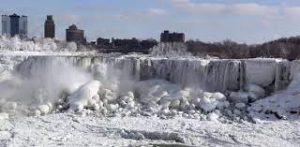
Various parts of India, especially North India, have been experiencing a severe cold wave. Warnings for the severe cold waves have been issued in several northern states.
- A cold wave is different for the plains and the mountains.
- According to the Indian Meterological Department (IMD) if the temperature goes below 10 degree and minimum temperature is at 4.5 degree, it is a cold wave for the plains. The criteria for hills is 0 degree.
- If the temperature is 6.4 degree below normal or down to 2 degree, it is a severe called wave in the plains.
- The IMD calls it “a condition of air temperature which becomes fatal to the human body when exposed.”
- What brings cold to the region, is the unabated north-westerly winds which bring chilly winds from higher latitude to Indo-Gangetic plains.
- However, passage of back-to-back western disturbances tend to change the wind direction from cold north-westerlies to warm and humid easterlies.
- However, with La Niña in place, what is expected is less amount of winter rains and thus, icy cold winds would continue to blow over Northwest India uninterruptedly, bringing down the temperatures.”
- El Nino and La Nina are part of the El Nino Southern Oscillation (ENSO) cycle.
- In 2020, La Nina developed during the month of August and then dissipated in April 2021 as ENSO-neutral conditions returned.
- For the upcoming winter season, which extends from December 2021 through February 2022, there is an 87% chance of La Nina.
The Niño and La Niña:
- They are two natural climate phenomena occurring across the tropical Pacific Ocean and influence the weather conditions all over the world.
- While the El Niño period is characterised by warming or increased sea surface temperatures in the central and eastern tropical Pacific Ocean, a La Niña event causes the water in the eastern Pacific Ocean to be colder than usual.
- Together, they are called ENSO or El Niño-Southern Oscillation.
- El Nino sets in when there is an anomaly in the pattern.
- The westward-blowing trade winds weaken along the Equator and due to changes in air pressure, the surface water moves eastwards to the coast of northern South America.
- The central and eastern Pacific regions warm up for over six months and result in an El Nino condition
Street For People Challenge And Nurturing Neighbourhoods Challenge:
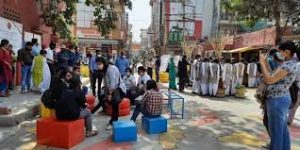
The Ministry of Housing and Urban Affairs (MoHUA) announced eleven winning cities for the Streets for People Challenge and ten winning cities for the pilot stage of the Nurturing Neighbourhoods Challenge.
- Streets for People Challenge is a city-led design competition.
- It supports cities across the country to develop a unified vision of streets for people in consultation with stakeholders and citizens.
- Each city would launch their own design competition with specific details on site, timeline, and awards.
- Nurturing Neighborhoods Challenge is a three-year initiative that will support cities to develop, pilot, and scale solutions that enhance the quality of life of young children, their caregivers and families in the public realm.
- It will be open to all smart cities, other cities with more than 5,00,000 population, and capitals of states and Union territories.
- Cities will receive technical assistance and help in capacity-building to:
- Re-imagine parks and open spaces
- Improve access to early childhood facilities
- Adapt public spaces with early childhood-oriented amenities
- Create accessible, safe, walkable streets for young children and families.
Houthis Attack UAE:
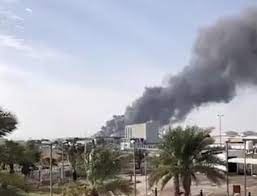
The roots of the Houthi movement can be traced to “Believing Youth” (Muntada al-Shahabal-Mu’min), a Zaydi revivalist group founded by Hussein al-Houthi and his father, Badr al-Din al-Houthi, in the early 1990s.
- Badr al-Din was an influential Zaydi cleric in northern Yemen. Inspired by the Iranian revolution of 1979 and the rise of Hezbollah in southern Lebanon in the 1980s, Badr al-Din and his sons started building vast social and religious networks among the Zaydis of Yemen, who make up roughly one-third of the Sunni-majority country’s population.
- But when the movement turned political and started attacking the “corrupt” regime of Ali Abdullah Saleh (in Yemen) and his support for the US’ war on terror, it became a thorn on Saleh’s side.
- They called themselves Ansar Allah (Partisans of God), mobilising tribesmen in the north against the government.
- In 2004, Saleh’s government issued an arrest warrant against Hussein al-Houthi. He resisted the arrest, starting an insurgency.
- In September 2004, the government troops attacked the rebels and killed Hussein. Since then, the government launched multiple military campaigns in Sa’dah, the Zaydi stronghold, to end the resistance, which was locally called the Houthis movement, after their “martyred” leader.
- But it only strengthened the Houthis, who, by 2010, when a ceasefire was reached, had captured Sa’dah from the government troops.
World Employment And Social Outlook – Trends (WESO Trends) 2022: ILO
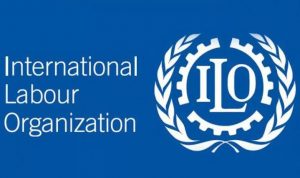
The International Labour Organisation (ILO) released a report titled World Employment and Social Outlook – Trends (WESO Trends) 2022.
- The Outlook remains fragile because the future path of the pandemic remains uncertain.
- The WESO Trends includes comprehensive labour market projections for 2022 and 2023.
- It gives assessments of how labour market recovery has unfolded worldwide, reflecting different national approaches to pandemic recovery and analysing the effects on different groups of workers and economic sectors.
Unemployment:
- Global unemployment is expected to remain above pre-Covid-19 levels until at least 2023.
- The 2022 level is estimated at 207 million, compared to 186 million in 2019.
Global Working Hours:
- In 2022, it will be almost 2% below their pre-pandemic level — that is equivalent to the loss of 52 million full-time jobs. This deficit is twice as large as the ILO’s forecast in 2021.
Global Labour Force Participation:
- It is estimated that in 2022 around 40 million people will no longer be participating in the global labour force.
Regional Differences: - The impact has been particularly serious for developing nations that experienced higher levels of inequality, more divergent working conditions and weaker social protection systems even before the pandemic.
- Many low and middle-income countries have low access to vaccines and limited scope to expand government budgets to address the crisis.
Starkly Different Impacts:
- The report warns of stark differences in the impact that the crisis is having across groups of workers and countries – deepening inequalities within and among nations – while weakening the economic, financial and social fabric of almost every State, regardless of development status.
- The damage is likely to require years to repair, with potential long-term consequences for labour forces, household incomes, and social and possibly political cohesion.
Different Sectors:
- Some sectors, such as travel and tourism have been particularly hard hit, while other sectors such as those related to information technology have thrived.
Impact on Women and Young Population:
- Women have been worse hit by the labour market crisis than men and this is likely to continue.
- The closing of education and training institutions will have long-term implications for young people, particularly those without internet access.
Expected Recovery:
- There can be no real recovery from this pandemic without a broad-based labour market recovery.
- Sustainable recovery is possible, but it must be based on the principles of decent work, including health and safety, equity, social protection, and social dialogue.
- The new labour market forecast can be vital for policy planning for a country like India, where most of the work is informal, to prevent further employment losses and reductions in working hours.
National Centre For Good Governance (NCGG):

In order to promote inclusive good governance, strengthening of local institutions and effective implementation of government programmes, the National Centre for Good Governance (NCGG), Government of India and National Institute of Rural Development & Panchayati Raj (NIRD & PR), Hyderabad signed MoU on 17th January 2022.
- The main purpose of having this agreement is to focus on different collaborative activities by drawing upon the strengths of these two national institutions for bringing better good governance mechanisms into practice across all programmes and schemes.
- The National Centre for Good Governance (NCGG) is an autonomous institute under the aegis of Department of Administrative Reforms and Public Grievances, Government of India. Its head office is at New Delhi and branch office at Mussoorie.
- The National Centre for Good Governance traces its origin to the National Institute of Administrative Research (NIAR). NIAR was set up in 1995 by the Lal Bahadur Shastri National Academy of Administration (LBSNAA) the Government of India’s apex training Institute for higher civil services.
- NIAR was subsequently rechistened with an expanded mandate, as National Centre for Good Governance, which was inaugurated on February 24th, 2014.
International Roaming:

As part of the policy reforms initiated in telecom sector, the Department of Telecom (DOT) has issued the “Revised terms & conditions for issue/renewal of NOC for sale/rent of International Roaming SIM Cards/ Global Calling Cards of Foreign Operators in India”.
- The revised terms & conditions strengthens the mechanism to protect the interests of the Indian public visiting abroad and also streamlines the procedures in line with the other licenses/registrations.
- The revised policy mandates the NOC holders to make provision for providing information regarding customer care service, contact details, escalation matrix, itemised bills, information related to tariff plans, services offered, etc.
- Provision has also been made to strengthen Billing and consumer grievance redressal mechanism to facilitate time bound resolution of grievance by the NOC holders with provision for Appellate Authority in DOT.
- Further, the revised policy also streamlines the application process/ other procedures for the NOC holders in line with the other licenses/ registrations etc. in the DOT and to facilitate the resolution/ management of the issues of the NOCs holders.
Sustaining Food Production under Environmental Stress:
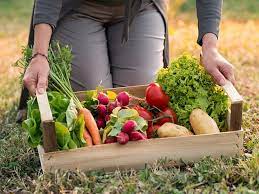
Union Minister Dr. Jitendra Singh addressed the India-UK meet on “Sustaining Food Production under Environmental Stress” through virtual mode.
- The Workshop is being organized jointly by National Agri-Food Biotechnology Institute (NABI), Mohali, an institute under Department of Biotechnology, Government of India and University of Birmingham, UK and supported by Newton Bhabha Fund and British Council.
- Dwelling on the issue of Sustainable Food Production, Dr Jitendra Singh said, the South Asian region is facing the shrinking arable land, besides the problem of global climate change that needs to be addressed.
- Quoting World Bank data, the Minister pointed out that the Arable land in South Asia was reported at 43.18 % in 2018 which has been stagnant since the early 1970s and recently declining.
NECBDC:

NECBDC sponsored a training programme on “Bamboo Shoot Processing and Preservation” which was conducted by the NECBDC empanelled cluster M/s Delicacies food processing Center, Meghalaya the same venue from 13th to 17th, December 2021.
- North East Cane and Bamboo Development Council (NECBDC) is under the Ministry of DoNER, Govt. of India.
- Formerly known as Cane and Bamboo Development Council (CBDC), NECBDC was incorporated with the objective of organizing the hitherto untapped bamboo sector of NE India.
- It is located in Byrnihat, Assam.
- Bamboo shoots or bamboo sprouts are the edible shoots (new bamboo culms that come out of the ground) of many bamboo species including Bambusa vulgaris and Phyllostachys edulis. They are used as vegetables in numerous Asian dishes and broths.




